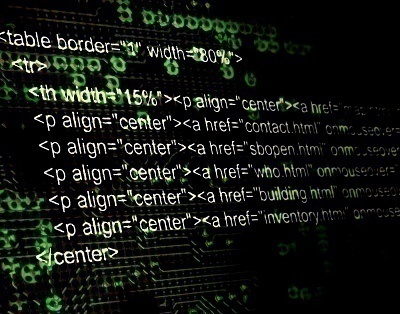HTML Codes
As computers broke out of the dawning period and become more popular, computer programmers worldwide needed a universal standard to create and control documents. What they chose was HTML, or Hypertext Markup Language, a programming language that isn’t so much of a language as it is an alphabet. All other programming languages are based on HTML which means if you want to learn programming, you must first learn HTML. In this article, we will go over what HTML is and how it works, how HTML came to be, dynamic html and unicode, the differences between SGML-based HTML and XML-based HTML, and the differences between transitional HTML and strict HTML.
What is HTML
HTML, or Hypertext Markup Language, is the basic structure of the Internet. HTML is the alphabet that all other programming languages use to perform functions and carry out tasks, both online and offline. HTML is very easy to learn and would further your computer career dramatically by learning it. HTML is used to design layouts, change colors, change font style and size, and is a crucial part of every other programming language which means that HTML can be found in any type of code. HTML isn’t just layouts, though, it’s the entire browser system that allows you to view and work with the Internet itself. If you want to learn programming, you must learn HTML first.
How HTML Works
HTML is comprised of various elements that work together in order to produce a structured document. HTML consists of elements, attributes, data types, character references, and entity references. Each element includes both the tags and whatever is written in between the tags. An attribute is the information written in the tags where as the content is the information written in between the starting tag and the ending tag. Elements only work if the tags are opened and closed in the correct format. For example, This Is The Title would put the words “This Is The Title” at the top of this page, but only if the <> and tags are setup correctly.
Origins
HTML was invented in the mid-1980s by Tim Berners-Lee, the same man who helped create the worldwide web, to structure documents. Around the same time, Berners-Lee was working on a software called ENQUIRE, which was basically a forerunner to the worldwide web (that Berners-Lee created in 1989). HTML was used in both this ENQUIRE program as well as the worldwide web to allow for documents to be shared via the Internet. HTML started off as a simple collection of 20 tags or so but over the years, HTML has been transformed into a much more complex and useful language.
Dynamic HTML
Dynamic HTML, or DHTML, refers to a collection of several different programming styles to make web-based presentations stylish and animated. Dynamic HTML includes a markup language, a client-side scripting language, a presentation definition language, and the Document Object Model. Dynamic HTML is used to create menus and animated layouts for web pages and is also used to create interactive online games. DHTML can work with static HTML to perform additional functions for web pages that have not been already programmed in DHTML. The downside to DHTML is that it is not reliable for all types of browsers and can create complications with people that do not have a broswer than can access it.
Unicode
Because HTML is an internet-based language, there is the intial problem of creating a code that users from around the world can use the same way despite the many different languages that users speak. To get around this issue, unicode was invented to create an international character definition that all users can write no matter what language they read and write in. Unicode allows HTML to accept commands from any language and output them the same way. HTML tags are generally written in English, but they can be written and understood by the computer no matter what language you use. When you use HTML, the tags are converted to an international standard of computer characters that the web browser can read. That means that whether you write the tags in English, Spanish, German, or any other language, they are all converted to the same basic format represented by bits of information.
SGML- vs XML-based HTML
SGML, or Standard Generalized Markup Language, refers to the overall technology that markup languages use. SGML sets limits on what makes up a markup language and is basically an international standard for the technology. Therefore, SGML-based HTML is a strict dual programming language that cuts out any excess information. XML, or Extensible Markup Language, involves storing and transporting information. XML-based HTML, or XHTML, is a free-flowing programming language that allows for you to make up your own tags to store and transport information while also displaying that information in the correct format.
Transitional vs Strict HTML
HTML is written in many different forms and has been upgraded many different times over the past two decades. Because of this, there are different styles of writing HTML. Transitional HTML is a style that allows for loose commands in HTML documents to help users cope with the changes involved in the various HTML versions. Strict HTML, on the other hand, sets a firm definition of HTML and forces the user to use specific tags to create a document. Both the transitional and strict styles of HTML lack certain features and each has additional commands that are different from the other. Regardless, both styles serve the same purpose and that is to create a functioning HTML document.


Comments - No Responses to “HTML Codes”
Sorry but comments are closed at this time.